

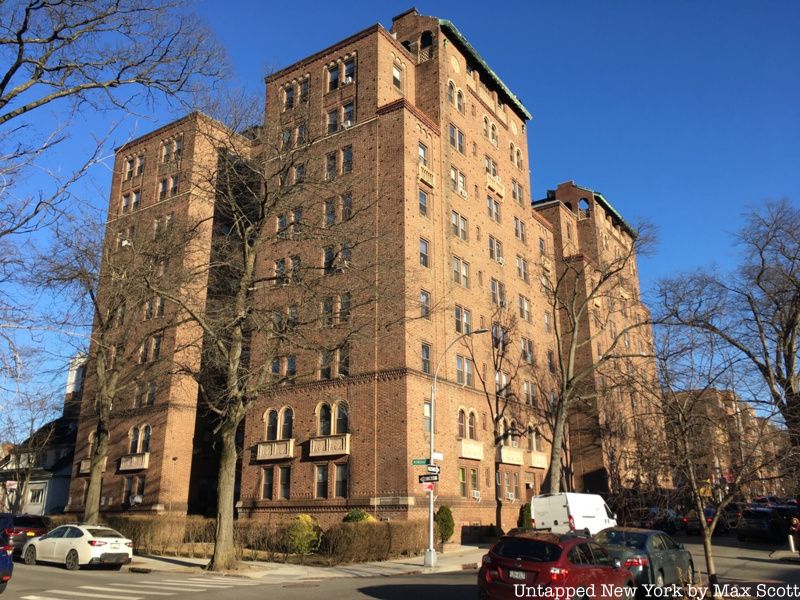
Kew Gardens is a residential community in central Queens. The neighborhood consists of single-family homes and apartment buildings situated along two major subway lines and bordering the Van Wyck Expressway. With a 2010 population of just over 23,000 people, Kew Gardens is dense and fairly diverse. And yet, Kew Gardens still manages to retain a sense of tranquility amid the bustle of the city.
For thousands of years after the end of the last Ice Age, what would become Kew Gardens was a basin for the wetlands of Flushing Meadows. The area was settled by the Dutch in the 1630s, but it remained rural until the 20th century. In 1875, the Maple Grove Cemetery opened in Kew Gardens, and the Long Island Rail Road (LIRR) built a station to serve mourners just a few months later. In the 1890s, the section around the LIRR station was developed into a golf course and a hotel called Hopedale Hall, which briefly gave the area the name Hopedale. Then, in 1909 the golf course and hotel were demolished to make way for a planned garden community (one of only seven in Queens) that was built in the neo-Tudor architectural style. This new neighborhood was named Kew Gardens after the luxurious botanical gardens in southwest London. Here is our guide to the top 10 secrets of Kew Gardens!
1. Jamaica Avenue was a trading highway for Indigenous tribes across the Northeast
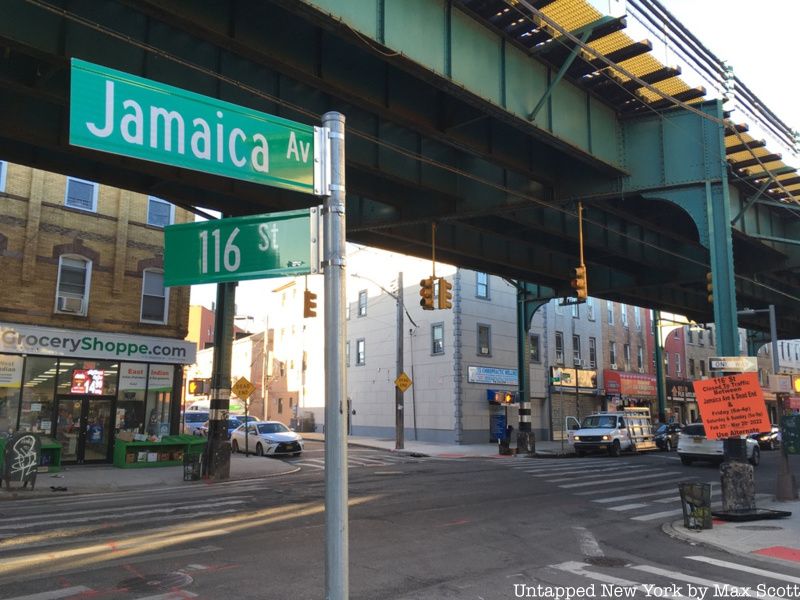
In pre-colonial times, the area that is now called Kew Gardens was likely inhabited by the Matinecock people. Modern-day major thoroughfares like Jamaica Avenue, Sutphin Boulevard, and the route of the Van Wyck Expressway were once important trading paths for tribes across the Northeastern United States.
Jamaica Avenue, which runs east-west through Kew Gardens and functions as its southern border, was the most important of these long-established trading highways. Indigenous peoples from as far as the Ohio River and the Great Lakes traveled to the East Coast to trade furs for wampum, a valuable bead made by carving and smoothing shells from sea snails and clams. Although money did not exist in North American tribal societies in the same way as it did in Europe, beautifully carved wampum beads were commonly used as a pseudo-currency when goods were traded between different Indigenous nations. Jamaica Avenue was the main route that took people from the western edge of Long Island into the interior around Hempstead.
2. Kew Gardens was the site of the deadliest train crash in the Long Island Rail Road’s history
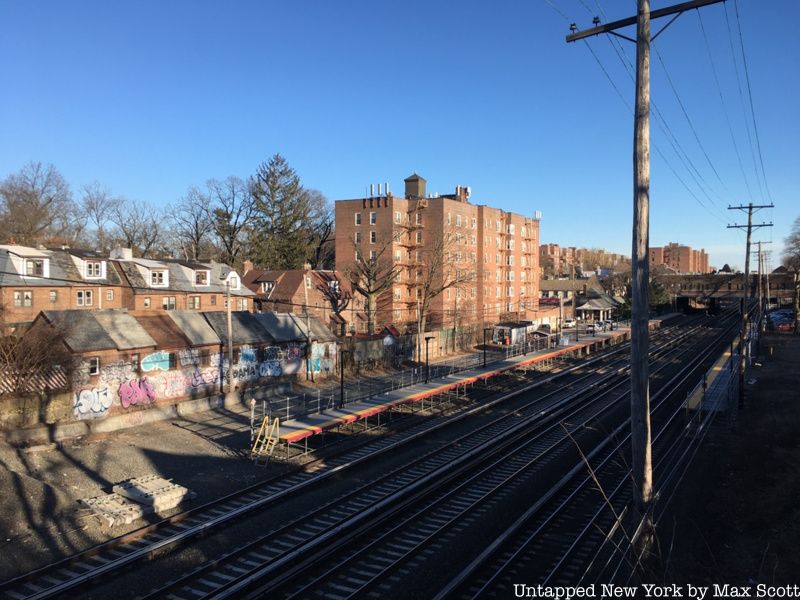
Kew Gardens was the site of the deadliest train crash in the Long Island Rail Road’s 188-year long history. The crash took place on November 24th, 1950 when a Babylon-bound train traveling at about 30 mph collided with a disabled locomotive that had been heading for Hempstead. Tragically, almost 80 people were killed in the crash and dozens more were injured. While this disaster was the worst in LIRR history, it was actually already the third crash of the year in 1950. In February of that year, two trains collided, killing 32 passengers, and in August a minor crash caused many injuries but zero deaths.
Up until 1966, the LIRR was owned by the increasingly bankrupt Pennsylvania Railroad company. As the automobile rose to prominence in the United States after the end of World War II, the nation’s railroad titans fell deeply into debt and became unable to maintain even a basic level of service and safety on their trains. Unfortunately, this led to a deterioration of the United States’ rail-based infrastructure, wasting thousands of hours spent sitting on delayed or broken trains.
In 1966, the failing LIRR was bought by New York State and incorporated into the Metropolitan Transportation Authority (MTA) in an effort to modernize and repair the New York region’s crumbling railroads. While there were many factors that led to the formation of the MTA, the gruesome LIRR crash of 1950 gave the state and local governments extra urgency to consolidate the railroads under the government. Depending on your opinion of the MTA, you can, at least partly, either thank or blame Kew Gardens for the MTA.
3. The murder of Kitty Genovese led to the coining of the term “bystander effect”
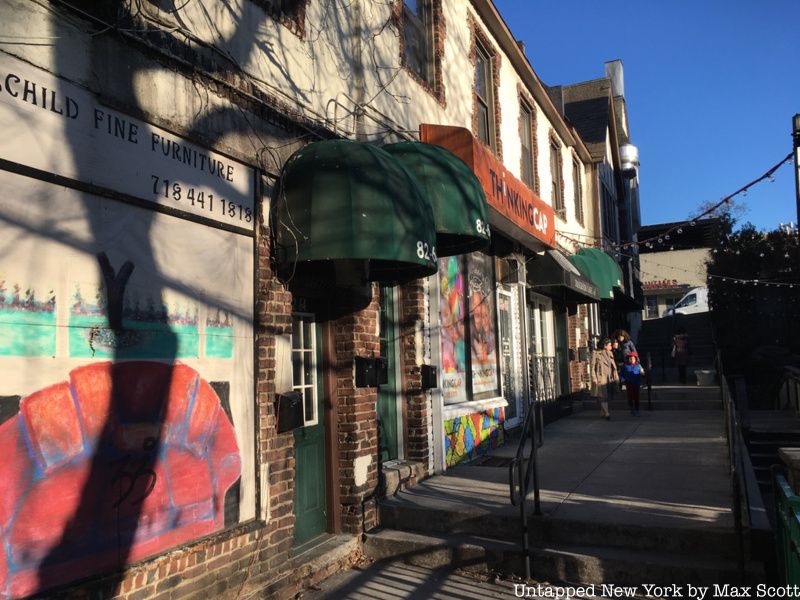
The narrow stairway that connects Lefferts Boulevard to the Long Island Rail Road station in Kew Gardens was the site of the infamous murder of Kitty Genovese in 1964. Kitty Genovese was 28 years old and working as a bartender when she was stabbed to death near her apartment in Kew Gardens. Soon after the stabbing, a New York Times article erroneously reported that there were 38 other people who either heard or saw the incident but did not take action. In reality, the number of people present was likely fewer than 38, and there is evidence that in fact, some people did try to call the police.
Nonetheless, the Kitty Genovese murder sparked the coining of the term “bystander effect.” Taught in introductory psychology classes for decades, the bystander effect is a psychological phenomenon used to describe inaction by witnesses of a crime or other wrongdoing. The theory goes that none of the 38 bystanders took individual action because they all assumed that someone else would do it.
While the bystander effect does probably have some bearing in certain social situations, the Kitty Genovese murder was likely not one of them. In 2007, an article in the American Psychologist reported that there wasn’t any evidence that the bystander effect occurred during the Kitty Genovese murder. And in 2016, the New York Times relented that its original article was inaccurate and exaggerated the number of people present at the time.
4. Rodney Dangerfield grew up in the neighborhood
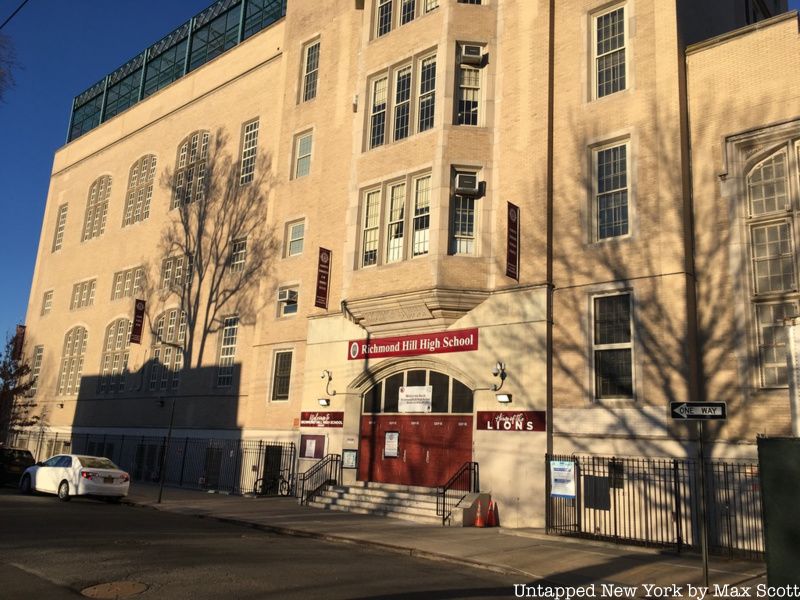
Kew Gardens was the home of legendary 20th-century American comedian Rodney Dangerfield. Born as Jacob Rodney Cohen in Suffolk County, Dangerfield and his mother moved to Kew Gardens when his father abandoned the family during the early years of his life. From childhood through to his graduation from Richmond Hill High School in 1939, Dangerfield lived in Kew Gardens and sold newspapers and ice cream to support his single mother.
Dangerfield began his career as a comedian in Ellenville, New York when he was 15. When he was 19, he legally changed his name to Jack Roy only to change it a year later to Rodney Dangerfield. Although he worked as a comedian for almost two decades without much success, his career took off after he went on the “Ed Sullivan Show” as an emergency replacement for a different act. From there, Dangerfield went on to become one of the most popular comics in the 20th century United States. While he only lived in Kew Gardens through his childhood and adolescence, Dangerfield brought his witty and dark New York humor to his comedy across the United States.
5. Kew Gardens Cinemas is one of a handful of Art Deco theaters in Queens
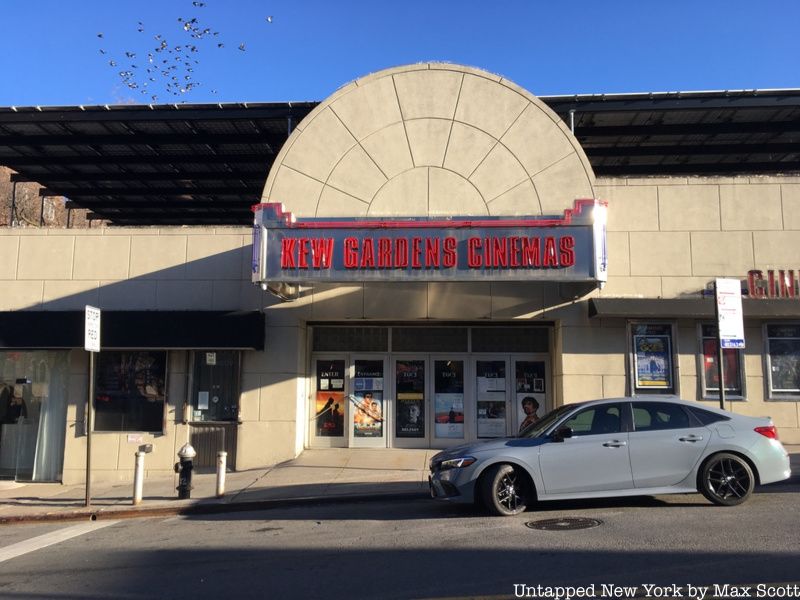
Kew Gardens Cinemas is an Art Deco theater built in 1935. Originally called the Austin Theatre because of its proximity to the prominent commercial thoroughfare along Austin Street, the theater was the height of modernity for its time. The Austin Theatre’s interior was decorated with ornate wooden paneling along the walls and a giant mural of a blue-and-pink stork across the ceiling. The theater remained luxurious and successful until the 1960s, when it went into decline, eventually being converted into a porn house in the 1970s.
Then, in the early 2000s, Harvey Elgart and his son Andrew Elgart bought the historic building and began refurbishing it to bring back its 1935 glory. They installed new wood paneling and removed layers of sheetrock from the ceiling to reveal the original stork mural, which survived largely undamaged. Today, the Kew Gardens Cinemas is a modern theater and movie house with a sleek Art Deco aesthetic.
6. The IND Queens Boulevard Express has a unique glass brick tunnel
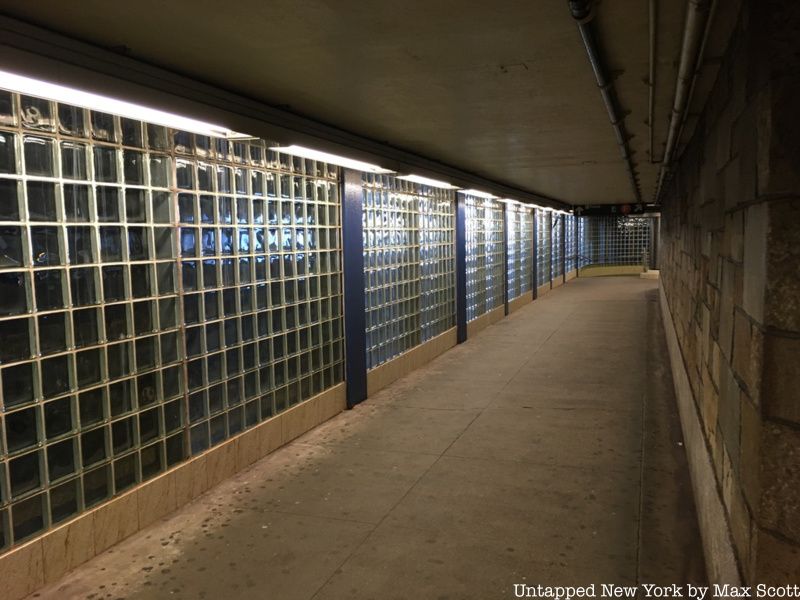
On December 30th, 1936, the IND Queens Boulevard express was extended to Kew Gardens from its previous terminus in Jackson Heights. The opening of the new subway cut commute times into Midtown down to only half an hour and spurred massive real estate development along Queens Boulevard. Property values soared, with lots that would have sold for $1,200 selling for upwards of $10,000. The real estate boom occurring in Kew Gardens even prompted some developers to laud Queens Boulevard as the “Park Avenue of Queens.”
One of the legacies of this fast-paced development is Kew Gardens’ large concentration of five- and six-story elevator apartment buildings that were typical of the late 1930s and early 1940s in New York. These buildings were designed both for the car and for pedestrians. Many buildings were built along a walkable, urban street grid, but they also include driveways that are hilariously narrow for modern cars.
In fact, even the Queens Boulevard subway was as much an infrastructure project for cars as it was for trains. One place where this dual-purpose infrastructure is shown off in a 1940s style is in the pedestrian tunnel under Queens Boulevard. This tunnel allows for easy underground access to the subway without having to cross the busy intersection at Queens Boulevard and Union Turnpike. But because the Jackie Robinson Parkway dives under that massive intersection as well, the pedestrian and car tunnels run parallel and are connected by a wall of glass bricks, which reached their height of popularity in the 1930s.
7. Brooklyn Manor is an abandoned LIRR Station in Kew Gardens
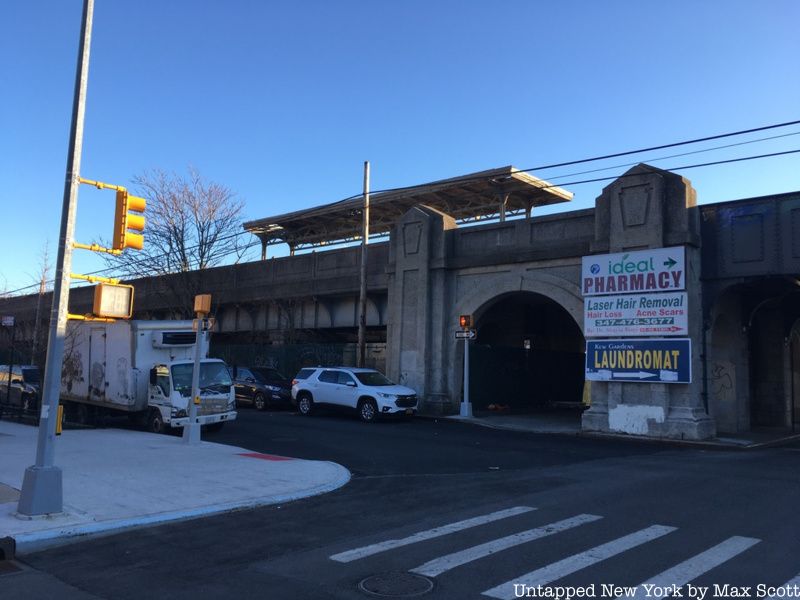
Sitting in broad daylight at the intersection of Hillside Avenue and Myrtle Avenue is the abandoned Brooklyn Manor elevated LIRR station. Built in 1911 as part of the Rockaway Beach branch, the station served a small development of 603 houses called Brooklyn Manor. When the Rockaway Beach branch was electrified, the Brooklyn Manor station was upgraded to serve electric trains with two new platforms. Only a few years after its opening, the Jamaica Avenue Elevated, now the J/Z trains, opened the 121st Street station in the area.
The combination of rapid transit service and the LIRR station gave this section of Kew Gardens exceptional connection to Manhattan up until the early 1960s. Then began the period of decline. In 1958, the two platforms on the Brooklyn Manor LIRR station were consolidated into an island platform to combat increased vandalism. Then, in 1962, the northern half of the Rockaway Beach branch was abandoned altogether and the southern section was subsumed by the subway as the A train. Today, the Brooklyn Manor station is overgrown with grasses and small trees, giving it the appearance of the High Line before its conversion into a linear park. Although there have been recent proposals to reactivate the abandoned section of track as either a bike trail or a rail corridor, those ideas have so far remained only on paper.
8. The Forest Park Carousel is a National Landmark
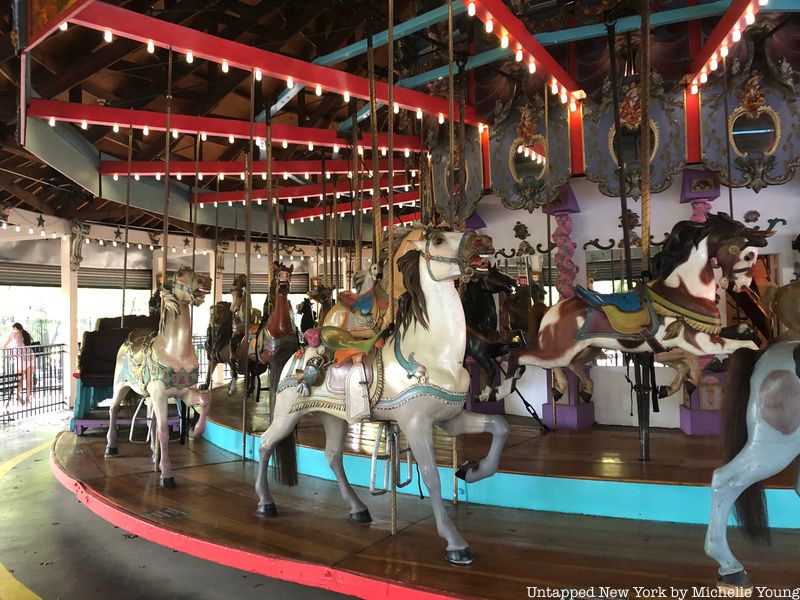
Hidden in the middle of the third largest park in Queens, the Forest Park Carousel is a National Landmark and offers a fun ride during a hot New York summer. The carousel was originally built in 1903 and survived until 1966, when it tragically burned down in a fire. The current carousel is originally from Massachusetts and was moved to the site in 1972. In 2004, it was added to the National Register of Historic Places because of its local significance in Kew Gardens and Forest Hills.
Unfortunately, in 2009 the Forest Park Carousel closed when its owner New York One LLC did not renew its contract. News of the carousel’s closing spread throughout the local community, which organized and petitioned the City to save the historic structure. In 2012, the Forest Park Carousel reopened to great fanfare and was designated a New York City Landmark only one year later. It has been operating since 2012 with additional rides and a modern concession stand.
9. The Queens Borough Hall has a retired Redbird out front
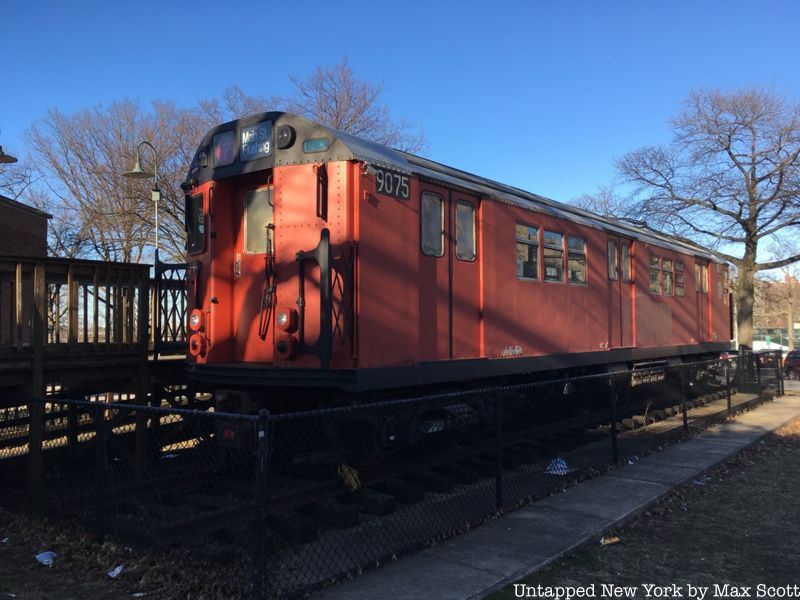
Kew Gardens is also the seat of the Queens County government. The Queens Borough Hall, which houses the county offices and the Queens criminal court, sits along Queens Boulevard adjacent to the Kew Gardens/Union Turnpike subway station. One quirky aspect of the Queens Borough Hall is the old Redbird subway car on the lawn in front of the building.
Redbirds were introduced in the late 1970s and became ubiquitous in the ’80s on the number 2, 5, and 7 lines in the Bronx and Queens. Their deep red color was used as a graffiti deterrent, but over the years New Yorkers grew fond of Redbird’s unique paint scheme. Although the Redbirds were largely retired by the early 2000s, with the last car making its run in 2003, the retired Redbird was set up in 2005 in Kew Gardens to commemorate the train cars’ history. Until 2014, the train car was set up as a mini-museum and was open to visitors. It closed in late 2014 due to a lack of visitors, but the retired Redbird still sits proudly outside the Queens Borough Hall today.
10. Kew Gardens has a large population of airline workers
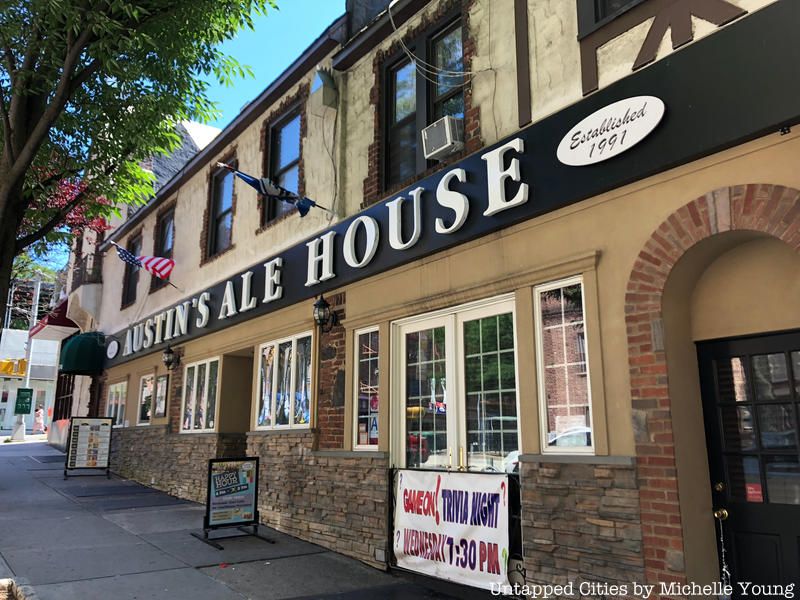
Kew Gardens is also a haven for Queens’s 49,000 airline workers. The neighborhood is popular with pilots and flight attendants because of its proximity to both LaGuardia Airport and JFK Airport. Kew Gardens is connected to both airports via the Q10 bus or the E train to Sutphin Boulevard in Jamaica. However, Kew Gardens hasn’t just been popular with airline workers in the recent past; the neighborhood has actually been a go-to-place ever since JFK Airport expanded in the 1960s.
Today, Kew Gardens serves as both the crash pad and social scene for thousands of crew members. Two popular local spots are Austin’s Steak and Ale House and Hangar 11, an aviation-themed bar on Metropolitan Avenue. In fact, airline workers are so important to the local economy that many of the neighborhood’s small businesses rely on them for regular business. The airline industry has even made a sizable dent in the local housing market. In 2018, it was estimated that JetBlue employees alone held about 2,000 crash pads in Kew Gardens.
Next, check out the Top 10 Secrets of Elmhurst, Queens!

